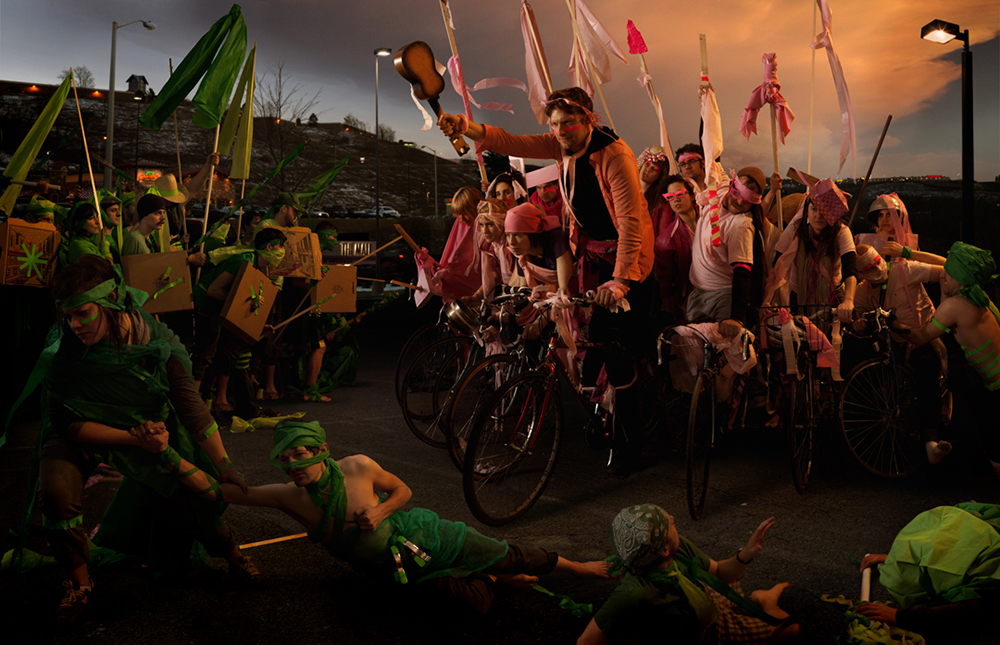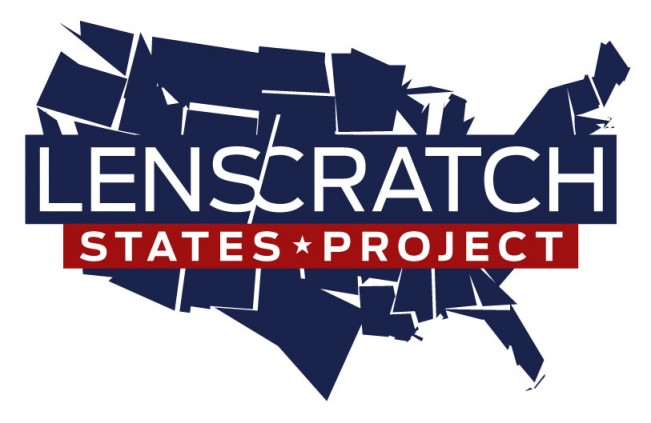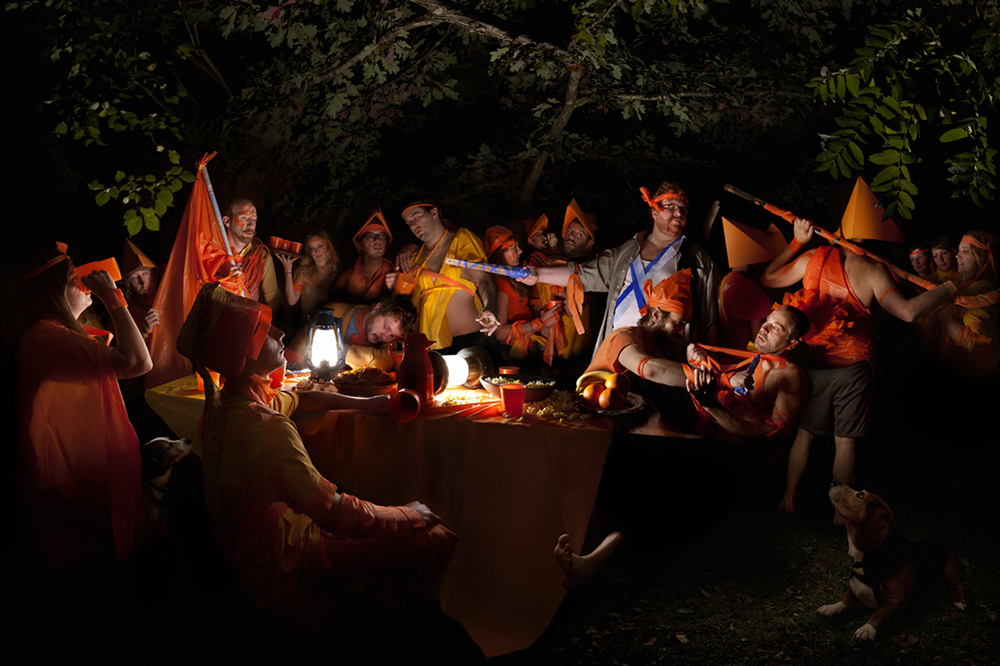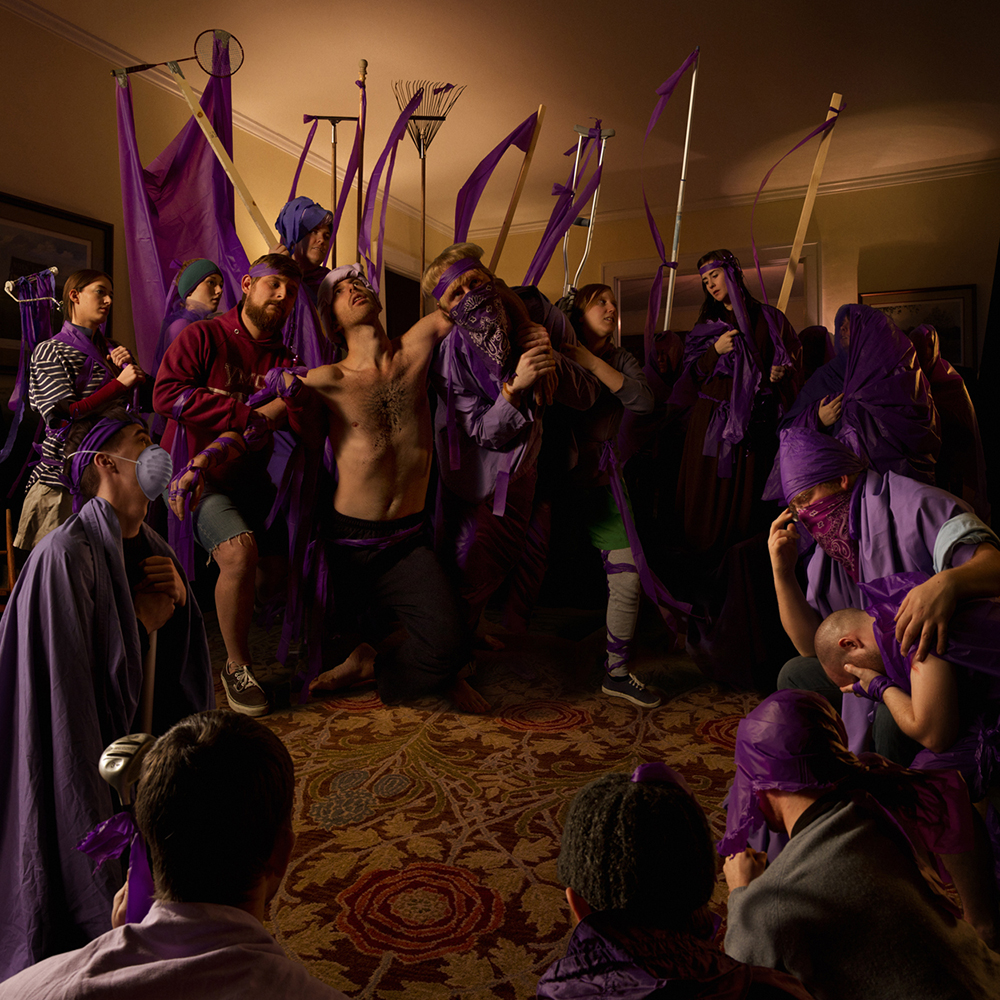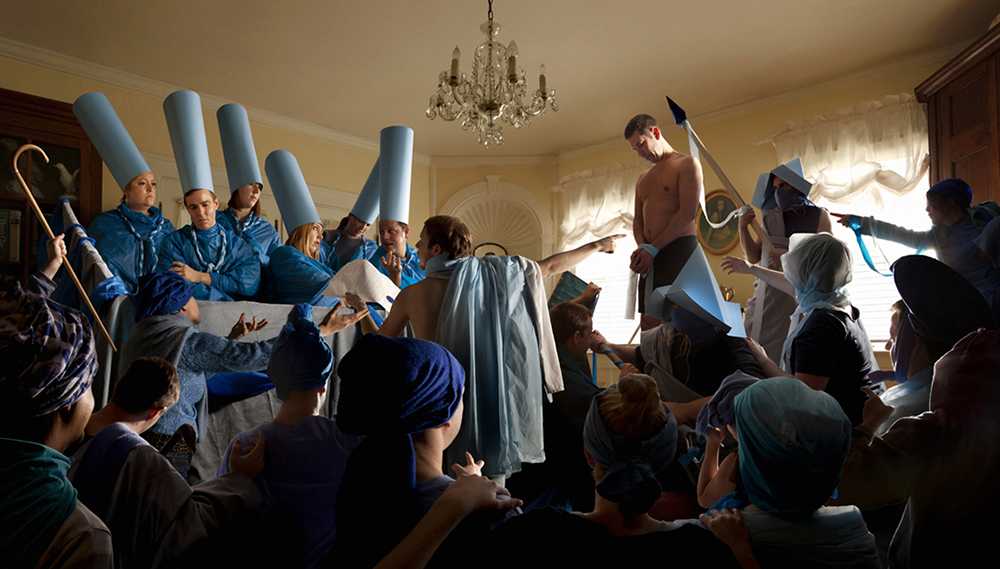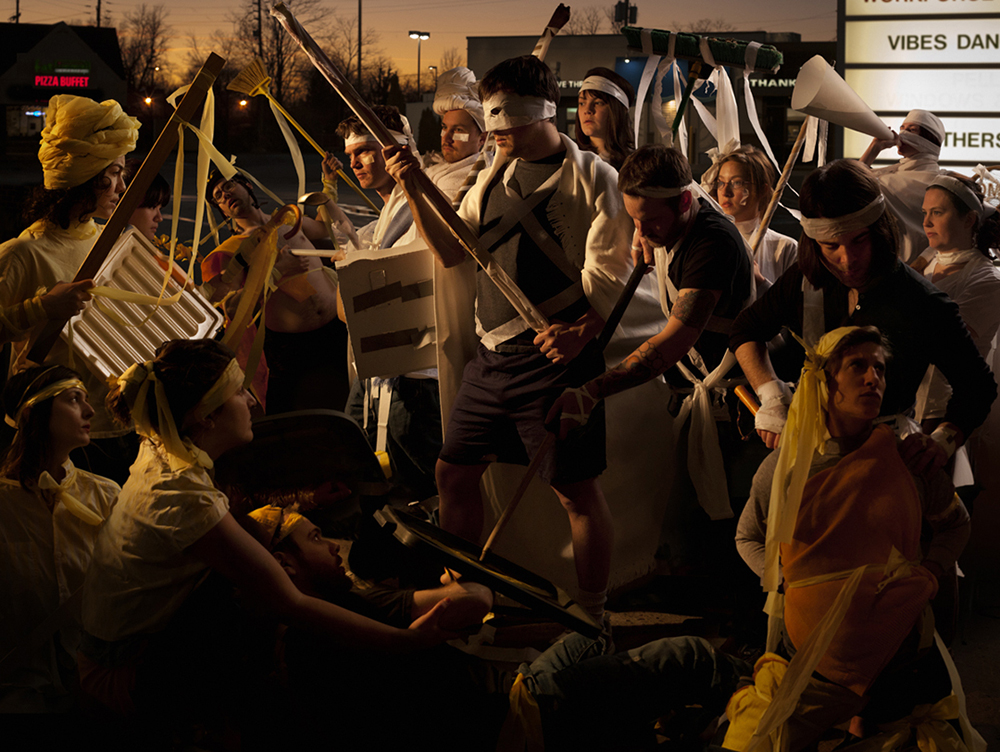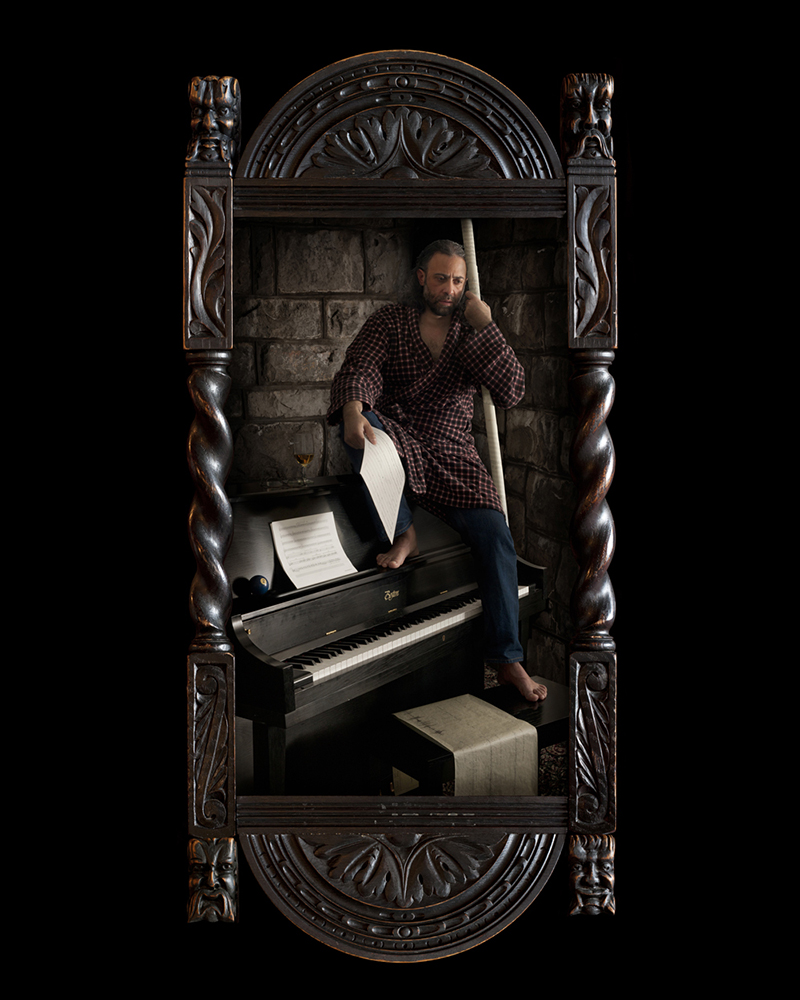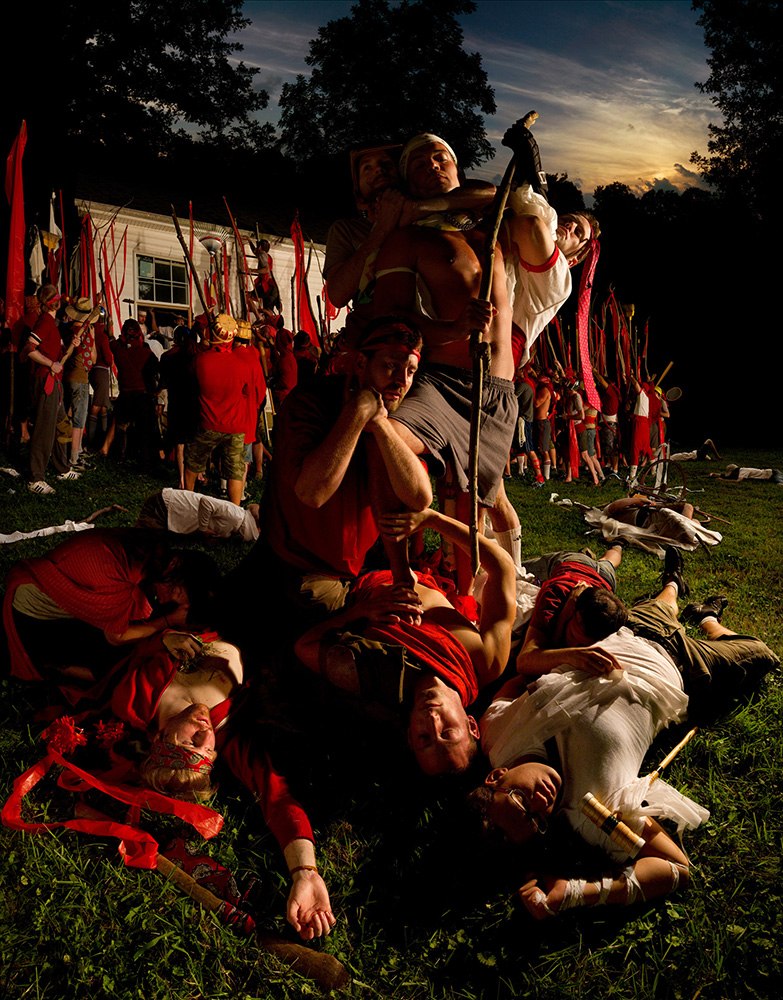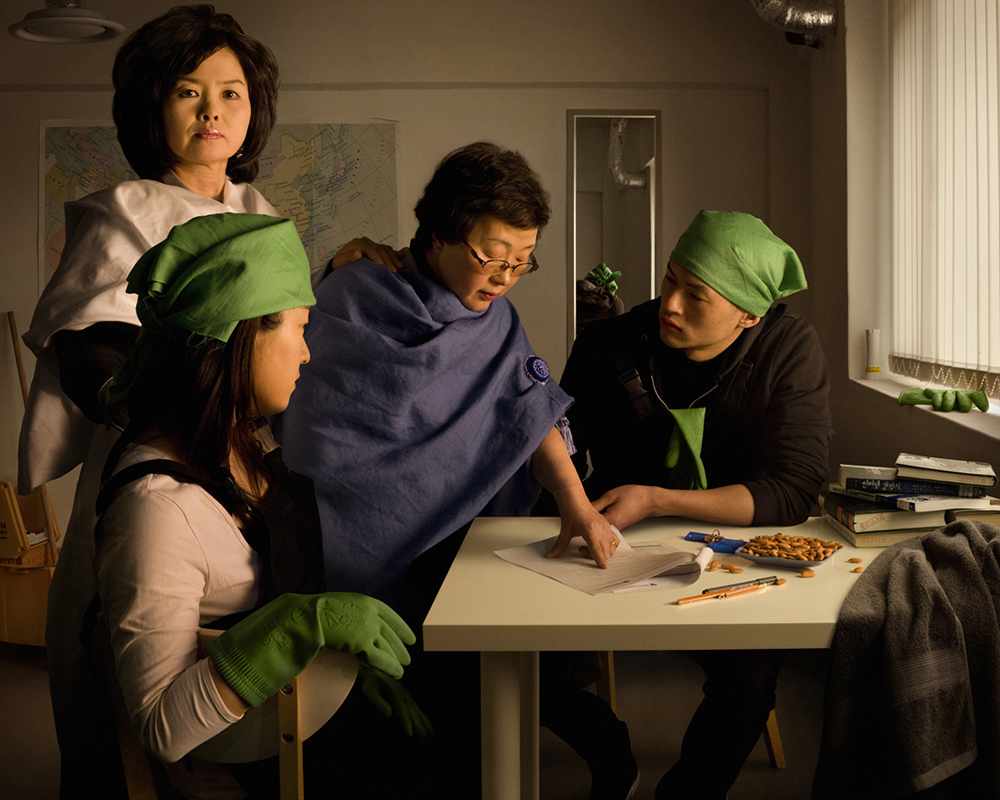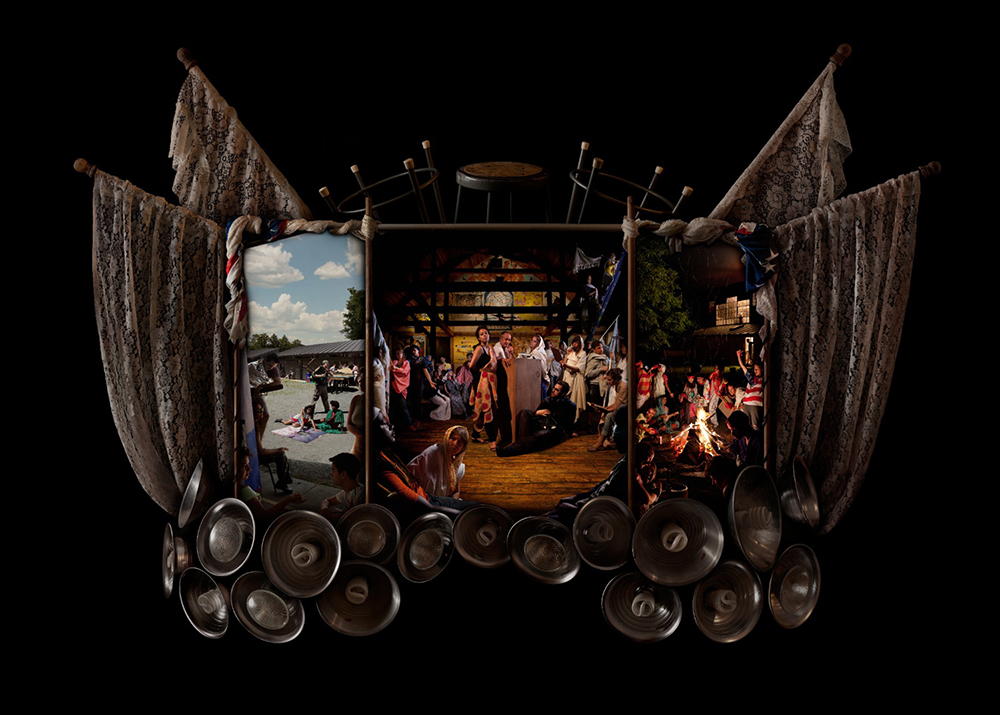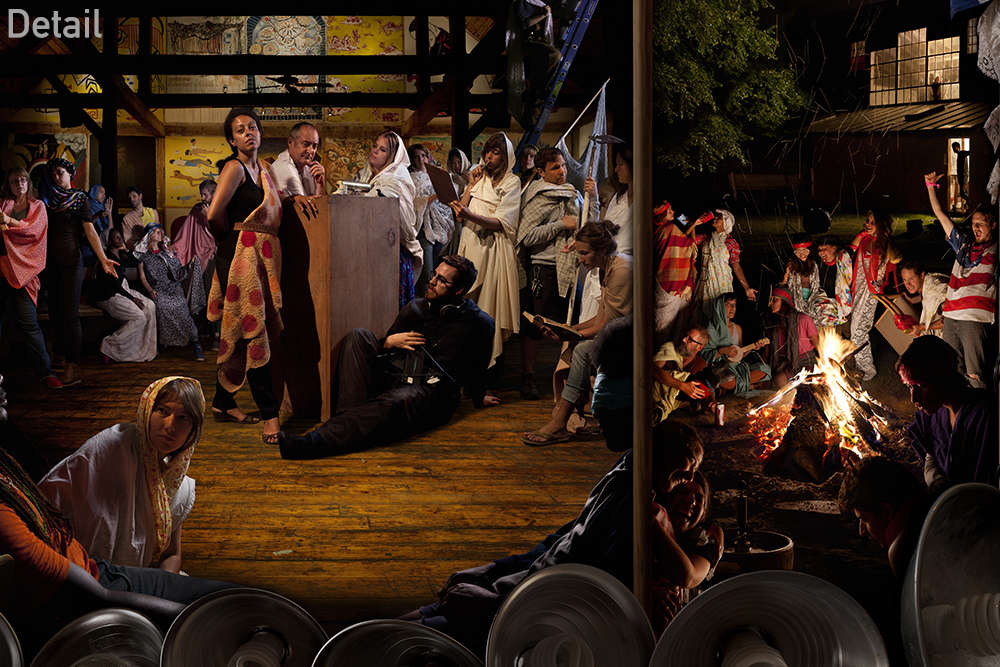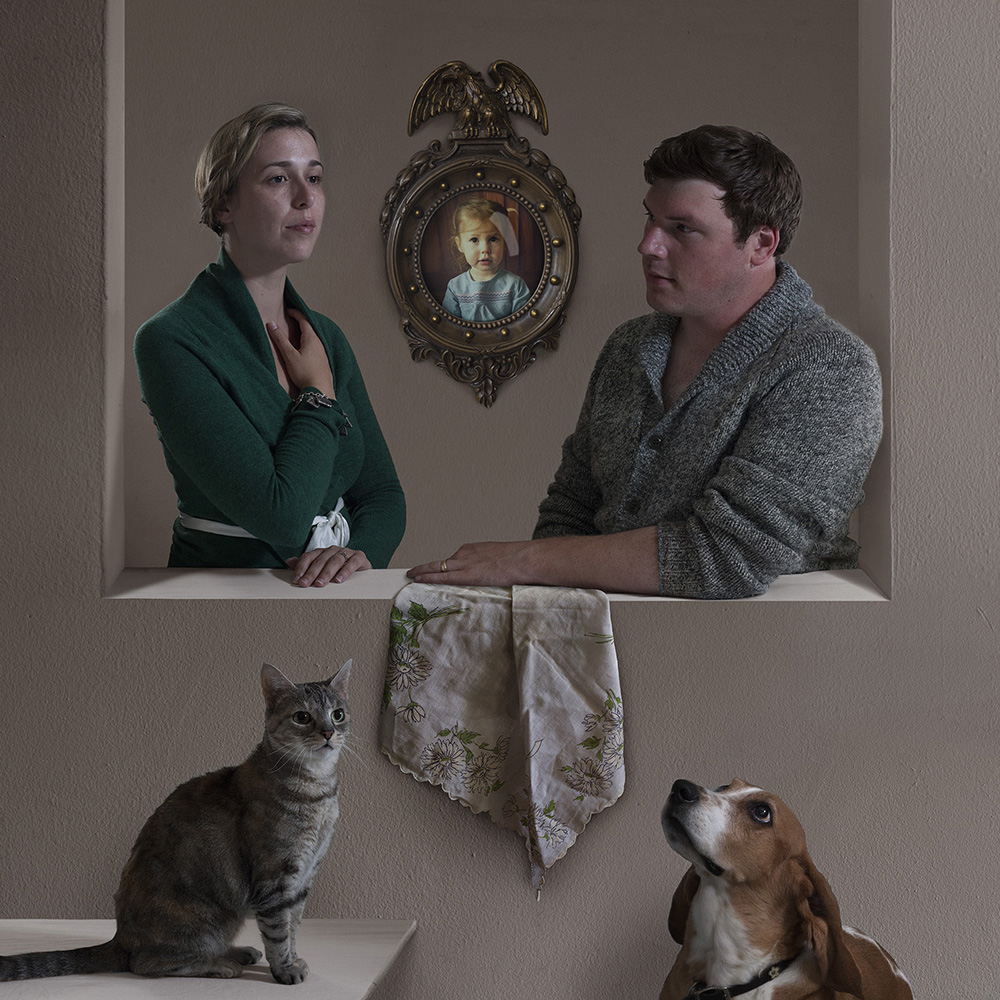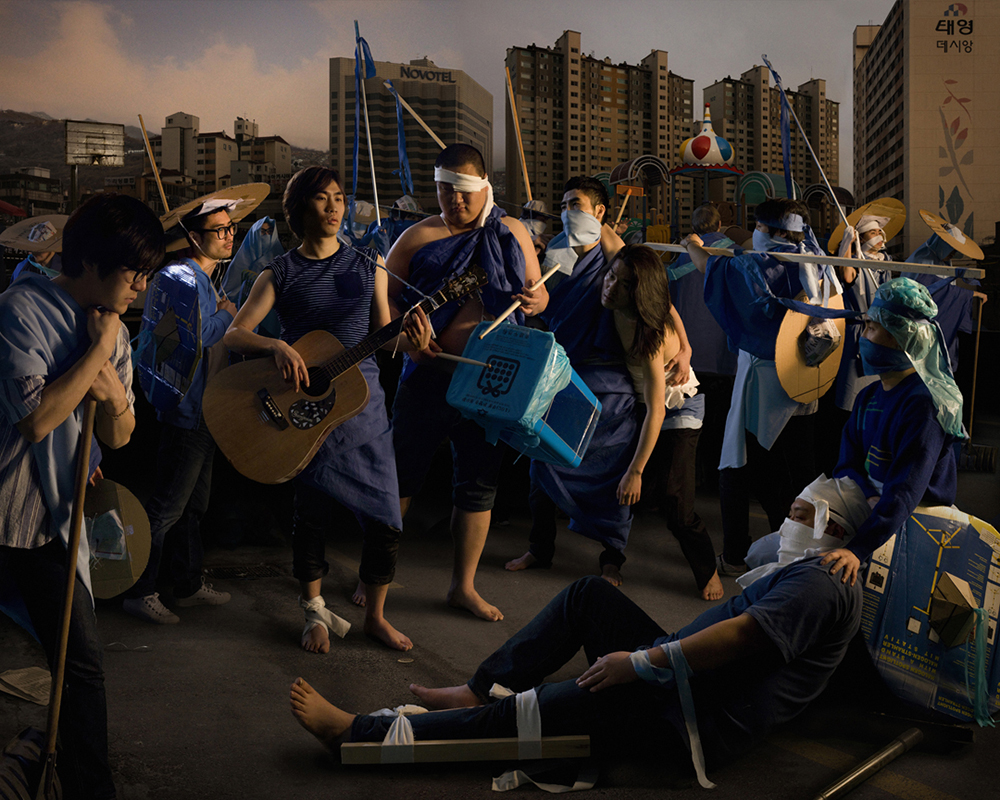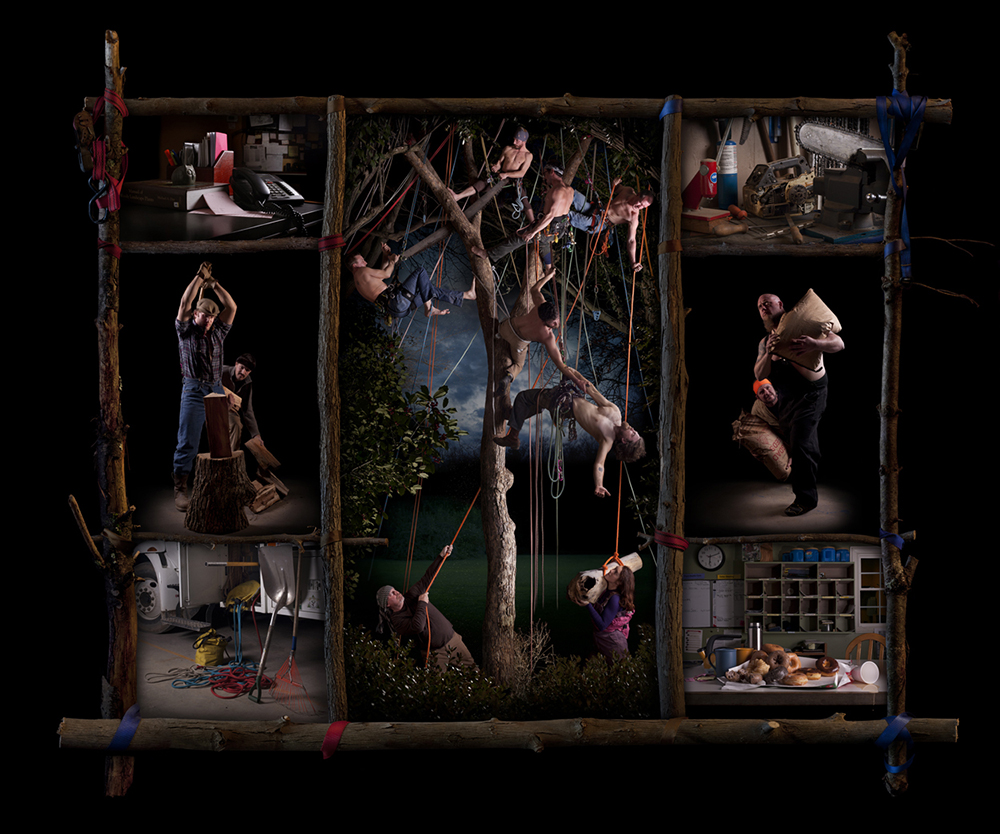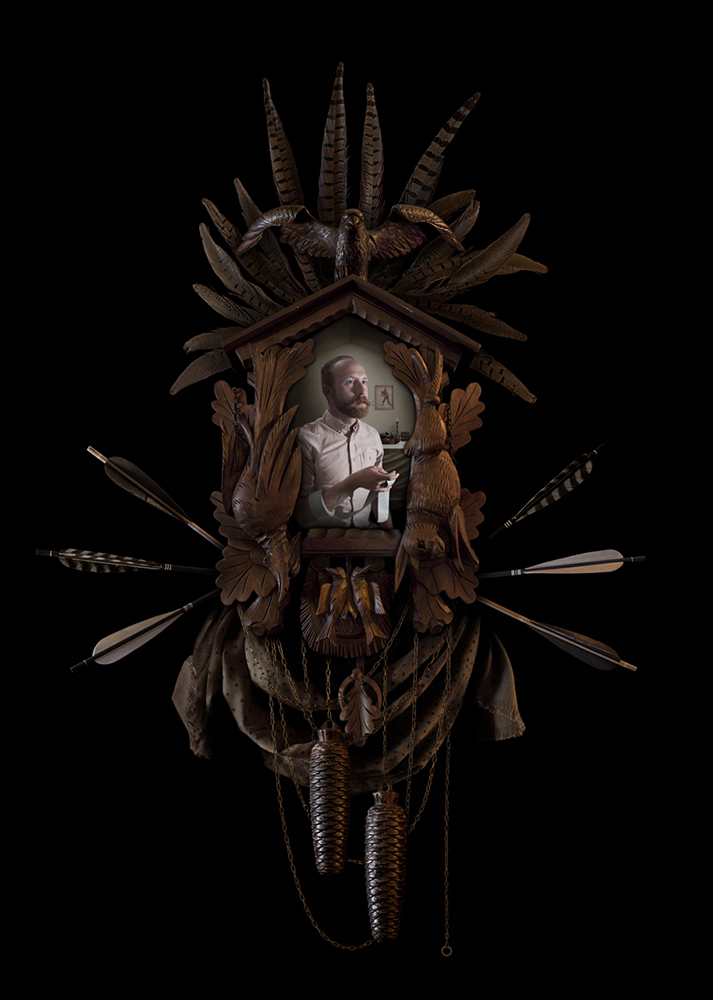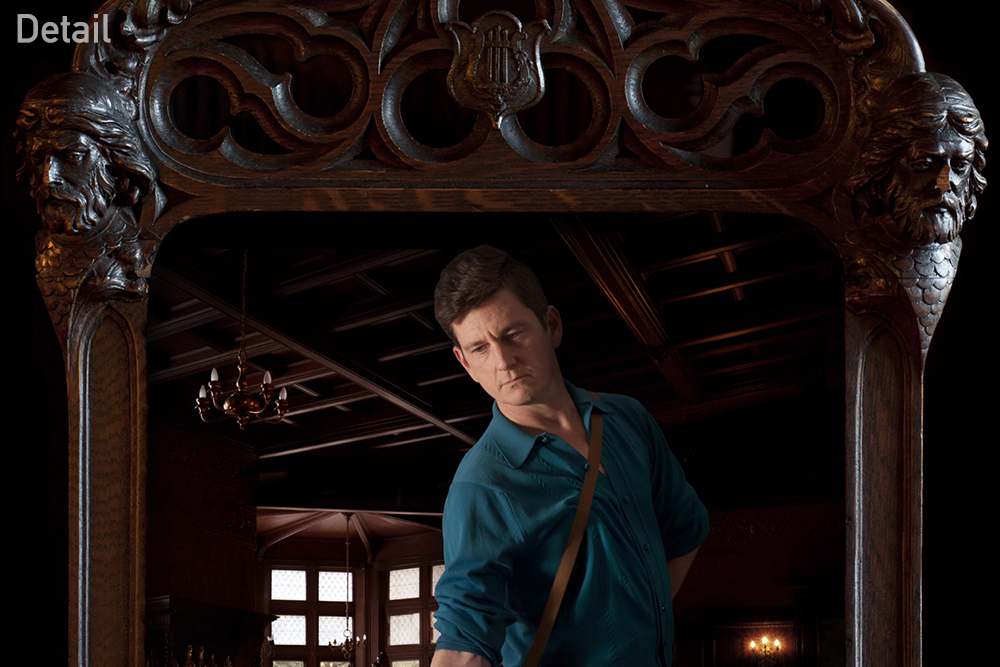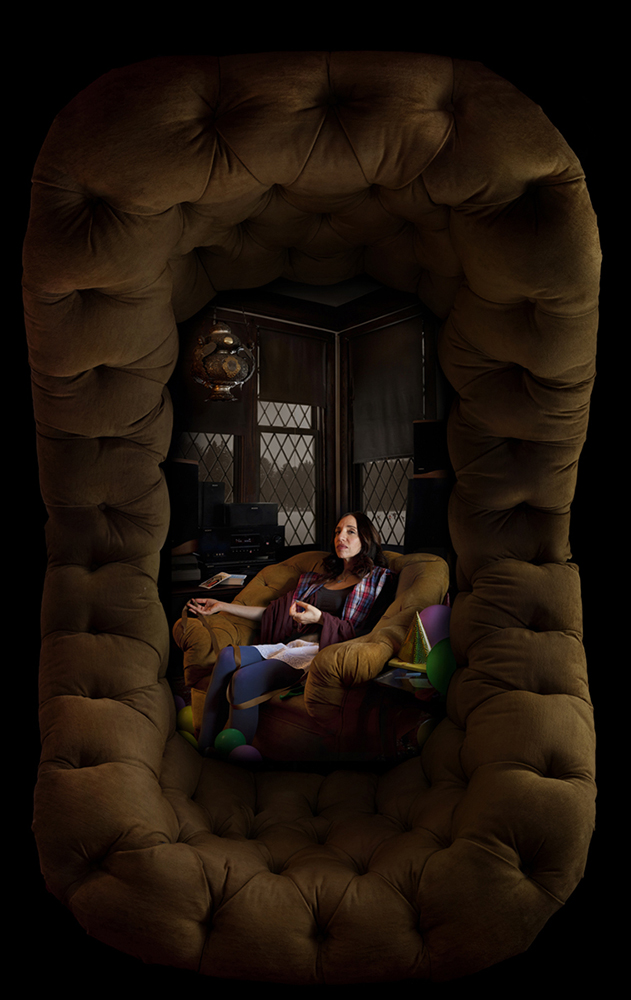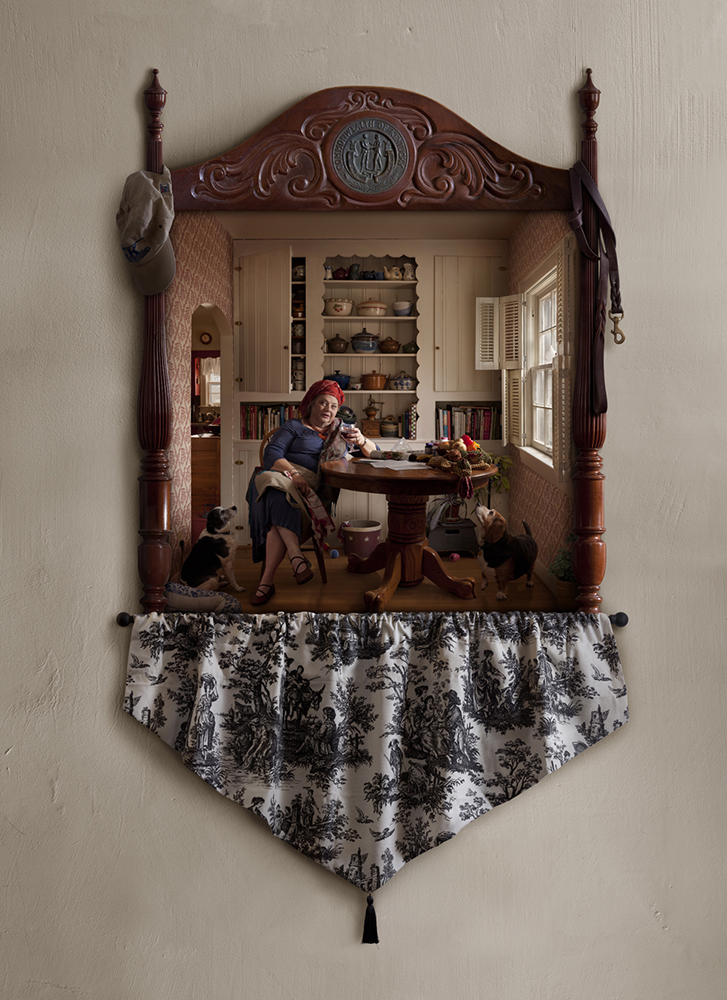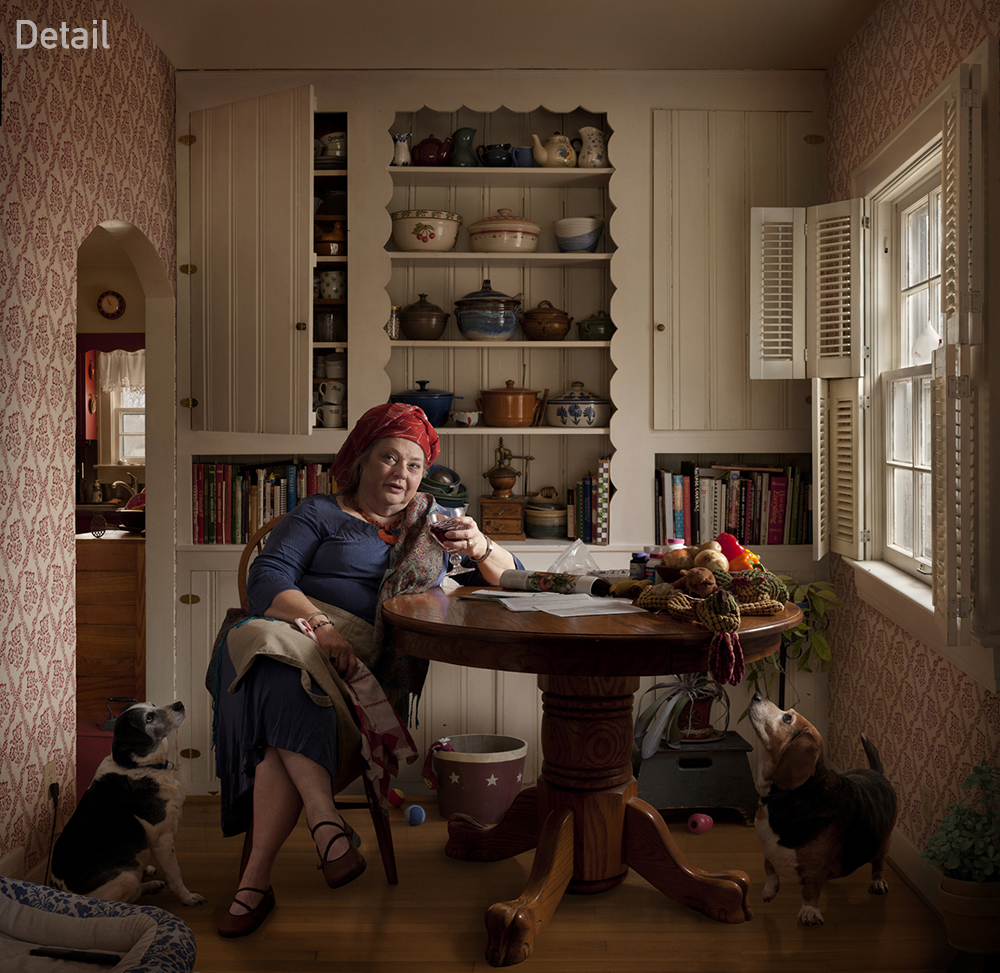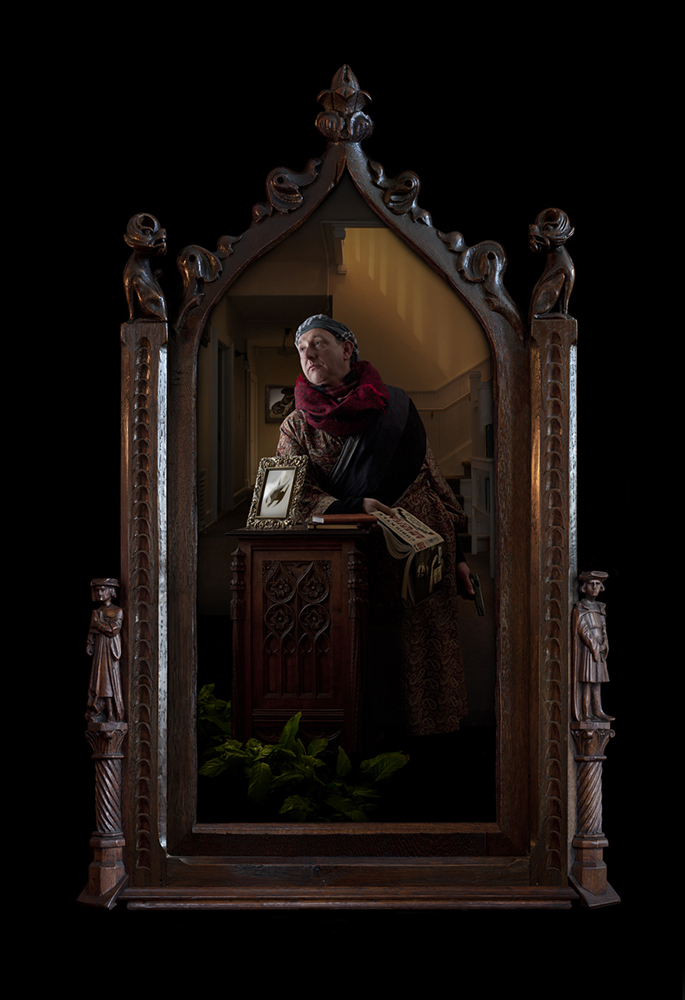James R. Southard: The States Project: Kentucky
Producing The States Project has been a wonderful window into work being creating around the country, providing exposure to photographers I might never have discovered on my own. I am so grateful to James Robert Southard for stepping up to the States Project Editorship plate for the state of Kentucky and sharing the work of wonderful photographers in his region. Kentucky is a state known for horse racing, bourbon distilleries, moonshine, coal, bluegrass music, and … fried chicken, but as this week demonstrates, so much more. James’ own work reveals an intense curiosity and an ability to create large scale tableaux as he wanders the country and his imagination for inspiration. Today we feature his project, Tool and Nail, and an interview with James’ follows.
After receiving his MFA from Carnegie Mellon in 2011, James Robert Southard has worked in the art world through invitations to international exhibitions such as the Moscow Biennale for Young Art, Hel’Pitts’Sinki’Burgh in Finland, Camaguey Cuba’s 5th International Video Art Fest and participation in the Internet Pavilion at the 54th Venice Biennale in Venice Italy. In 2012, James started a collaborative photography and video series with the collaboration of the city of Seoul, Korea at Seoul Art Space Geumcheon. Soon after he took his project to Maine where he was a participant at Skowhegan School of Painting and Sculpture, then later to MacDowell Colony in New Hampshire, Yaddo Retreat in New York, Jentel in Wyoming, MASS MoCA and currently to the dairy farmers of northern Vermont. His digital construction process allows for public interactions and collaborations to combine together in the aesthetics of each composition. While continuing this process in new communities, He has also returned to academia by teaching photography at the University of Kentucky.
Tooth and Nail
As a young Cub Scout, I recall an annual visit to Kentucky’s Perryville Civil War Battle reenactment, where we spent hours watching grown men dressed as if they were soldiers preparing for military engagement. This artificial battle should have been entertaining for a war-hungry child like myself, but compared to the violence that I was exposed to by 1990’s video games and television, it pathetically failed to convince or engage me. What drew the most interest from my fellow scouts and me was the smaller replicas of the rifles that we bought at the gift shops. With these miniature weapons, we staged battles between peer groups and took turns playing the victorious army or the fallen soldiers. This is likely because a more immersive, self-driven spectacle was required for the generation who grew up with video games. So we sought our own authentic experience by playing war amongst ourselves. Well-known performance writer, Rebecca Schneider, sees reenactments as: “Historical events, like wars, are never discretely completed, but carry forth in embodied cycles of memory that do not delimit the remembered to the past. For many history reenactors, reenactments are more than “mere” remembering but are in fact the ongoing event itself “ [1]
Even as a kid, I felt that the people marching around those fields were more interested in re-living that time period and inhabiting that portion of history than they were in putting on a show for tourists. In the American South, Civil War reenactments are not necessarily done to retell the story of the battle, but to gain a more physical understanding of what is described in school history books.
In contrast to true-to-history reenactments, the photographer An-My Lê presents photographic scenarios that are playful and inventive. After escaping Vietnam at the end of the Vietnam War as a teenager, An-My Lê attended Yale University in the early 1990’s. Her later work addresses the perceptions of war and its effect on landscape and people. Her Small Wars series (1999) was created in response to her memory of the war in her home country, and exhibits a phenomenon that she calls a “Vietnam of the mind”. She worked with American re-enactors of the Vietnam War in South Carolina where she was “allowed to delve into personal experiences of war and attendant adolescent fantasies about soldiers in uniform,” and the series documented the reenactors’ candid activities. Lê’s interest in playing with our conceptions of war, and the landscape of war, has been something I have been looking at with great interest, especially in relation to the differences between the reenactors and the soldiers. When looking at Lê’s work, it occurs to me that the two groups of people that she focuses on in the aforementioned series are both doing essentially the same thing: they are preparing themselves for battle. Yet one group is looking back to the past as a model for contemporary war narrative, while the other is looking forward toward real future combat.
These two demographics of people have been illustrated clearly by Lê, and the aesthetic similarity between the two groups is a perfect metaphor for the sometimes-blurry line that separates war from play in contemporary life. Tooth & Nail is an exploration of the place where those two realms overlap. Using that duality (war and play) as inspiration, and using art historical battle scenes as a formal guide, this series seeks to create—or at least to understand—wargasms- that moment“[when] reenactors claim to experience a physical collapse of time, or at least a profound confusion of time.” [2]
As soon as I was ready to end Tooth & Nail, outside groups started reaching out to me to expand the project so that it would exhibit more than my own understanding of war. I started working with choreographers, writers, arborists, military officers, lawyers, janitors and musicians to give them the opportunity to express their own curiosities and interests. As you can see, most showed little to no interest in exhibiting violence but instead their hopes, careers and ideal lifestyle. As the project progressed I gave up as much authorship as possible as I felt this was a golden opportunity to allow others to utilize my image construction technique to better address the individual’s or community’s own interests. – James Robert Southard
Footnotes
1.Schneider, Rebecca, Performing Remains. New York: Routledge, 2011. 32. Print
2.Schneider, Rebecca, Performing Remains. New York: Routledge, 2011. 50. Print
Thank you so much for taking on the editorship of the Kentucky States Project! But first, let’s start with you. Tell us about your growing up and what brought you to photography?
Thanks, I am happy to take the helm for Kentucky and share some amazing photographers from my home.
Growing up here in Kentucky? Well, I grew up in a small town outside of Louisville. The true Mayberry experience, where I knew everyone in town while riding my bike down Main Street from home to my dad’s office in the center of town. A very picturesque upbringing, though we grew up in a household where idle hands were never allowed. My parents insisted my brothers and I get involved in multiple sports, clubs and musical groups. I played sports, went camping with the scouts and was a woodwind player in all the bands at our school. All the while I was always doodling away in my sketchbook spending late nights perfecting some landscape or portrait. It wasn’t until I joined an after school photo club, that I fell in love with the camera. It wasn’t just the art of making a beautiful image that thrilled me, but how they were made. I loved the journey to the specific location of interest, the waking up before dawn to get the best light, and above all, meeting people and discussing with them my projects and convincing them to allow me to photograph them. I was hooked. After high school, I studied photography in college and worked as a local photographer for quick jobs and editorial magazines until I started teaching after graduate school, where I now teach photography most of the year when I am not working on my projects.
Do you believe there is a common thread connecting the photographers you selected?
I actually believe there isn’t. And I see that as a quality. This diverse field of photographers, I’ve worked with and met over the years, has always impressed me. Since I moved back to Kentucky five years ago, I have found that the art community is a mixing pot of artists from all over the country. People move or return here for work in the commercial or academic world and this brings everyone together to mingle, critique and exhibit each others ideas. This can range from dark room photography to digital collage to new media that borders the realm of lens based art. The subjects range from documentary work from the mountains of eastern kentucky to performance based digital art composited from footage shot in the Ohio River.
I have thoroughly enjoyed my return to this community for which I only knew as a young Louisville photo journalist before I left for graduate school.
Is there anything that defines or inspires photography in Kentucky?
Kentucky has a very unique history with photography. Since moving back, I have been learning more and more about the Lexington Camera Club. This group of lawyers, writers and opticians built a small experimental photo community in the 1940s. Photographers Ralph Eugene Meatyard, Van Deren Coke, Robert C May, Guy Mendes and others became a tight knit group, that would examine their culture, landscape and people for over 40 years. I had always been aware of Meatyard’s work, but didn’t know where it was coming from. I notoriously romanticize the adventures and artwork that came out of unique groups of bygone decades, such as Hemingways’ Lost Generation or Andy Warhol’s Factory. I always felt that those were creative moments in time that you would only read about in books far after the fact. Though a few of the original members of the Lexington Camera Club are still alive around town and are happy to chat about the old days. And, it must be said that the LCC has regrouped a few years ago and meets monthly in my art department at the University of Kentucky. So who knows what the reborn LCC will become.
Your website reflects a wide range of projects–over a dozen. Is there anything that connects your series?
I would say above all, history. Sometimes family history and sometimes the history of a place. For the longest time I was only making work about my personal family history looking outward only for materials that I’d utilize to create a project. It wasn’t until a few years ago that I was tired of only looking inwards and decided to take my project to other communities to shine the spotlight on them. Or at least give them the microphone for a project.
I began to think a little broader about what I was doing as an artists. An artist can make work about anything. Ideally, if you put me in any scenario, I should be able to work with anyone or thing that is available. So I made the choice to share the narrative of more and more of my projects with others. I started embedding myself into a community so I could create a project reflected their goals. I do my best to reach these goals, though the most important aspect of the project is not the aesthetics, but if the community or individual I was working with is happy. This is actually rather libraring as I share some of the authorship and this speeds up the beginning stages of my project.
Today we are featuring your incredible project, Tooth and Nail, that examines the duality of war and play–a timely subject with virtual reality and video games teaching soldiers about war. Do you have any desire to continue this exploration?
Yes and no. I have been working on that project for years. I started it in my last year of graduate school and I feel it is a well worn series. It feels like being in a band and singing the same songs from one album over and over again. Then again, I occasionally get approached by a group that are only interested in making an image for that series. So, if I am to follow my rule of doing what the subject wishes, I get back into the Tooth & Nail series.
I think there is a lot I learned creating this series. It changed drastically over the years and it was near the end of the time period i was working on it that my earlier training in photojournalism reemerged. I stoping being only a studio artist and combined a lot of things I learned in art school and my years as a local journalist and commercial photographer. I love it, and it’s this process that still continues in my latest work. So the building blocks from Tooth & Nail can be found in all the work methodology I have today.
And finally, describe your perfect day….
Ah, the perfect day starts around 9am. I’ve already had two cups of coffee along with my savory breakfast by then. I walk out the door into the landscape I am working in. This could be Wyoming, Vermont or even abroad. You see, this perfect day is one of those days in the summer break when I able to leave Kentucky for a month or more to imbed myself into a community. When I’m on location, each day is different, though my rituals are the same. After breakfast, I spend the morning scouting around the region looking for new connections to the community. This could be coffee shops, barber shops or even small markets, where I start conversations with anyone who has the gift of gab. Best folks to talk to are older retired people that look like they aren’t in any hurry. They are happy to tell you all about the region’s history, concerns, hopes for the future and who I should talk to next. After a morning of jockeying the diner stool, I head out with camera to follow up on these leads. Sometimes, I am driving down a dusty road leading into the mountains, while others, I’m walking through crowded markets looking for a “farmer’s stall with a smiling cow on the banor”. It is kind of an adventure. More than half the time I walk away without snapping a single photo. Though, I don’t see that as a failure. To get someone to pose, or allow me to photograph their family, artifacts, land or products, I need them to trust me. It always pays off not to rush your subjects. When I finally do get to photographing, I set up my little speedlights in the corner of their shop, out in the pasture or I have to shoot strait through the plexi glass of a museum display case. It is these every day problem solving situations I love so much that make each day so different. After an afternoon of shooting, I either join the people I’ve been talking to for dinner or evening drinks, or I make it back to home base where I flip through the day’s images while I sip on what ever acceptable Kentucky bourbon I could buy from the closest store.
That is a perfect day.
More work can be found at :http://www.jamesrsouthard.com/
Posts on Lenscratch may not be reproduced without the permission of the Lenscratch staff and the photographer.
Recommended
-
Earth Month Photographers on Photographers: Josh Hobson in Conversation with Kes EfstathiouApril 19th, 2024
-
Earth Month Photographers on Photographers: Leonor Jurado in Conversation with Jessica HaysApril 18th, 2024
-
Earth Month Photographers on Photographers: Sarah Knobel in Conversation with Jamie HouseApril 17th, 2024
-
Earth Month: Photographers on Photographers, Dennis DeHart in conversation with Laura PlagemanApril 16th, 2024

